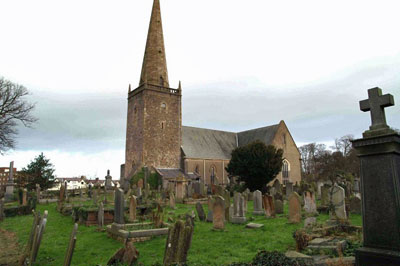 The third in the series of Bangor Historical Society’s lectures on Bangor 400 was held on the 14 March 2013. The meeting took place in the Council Chamber at the Town Hall by kind permission of the council. The speaker was Dr. John O’Keeffe, the principal Inspector of Historic Monuments in NIEA. His subject was “The Archaeology of the New Towne of Bangor.” The chairman, Bob McKinley, welcomed the Mayor, Deputy Mayor and councillors.
The third in the series of Bangor Historical Society’s lectures on Bangor 400 was held on the 14 March 2013. The meeting took place in the Council Chamber at the Town Hall by kind permission of the council. The speaker was Dr. John O’Keeffe, the principal Inspector of Historic Monuments in NIEA. His subject was “The Archaeology of the New Towne of Bangor.” The chairman, Bob McKinley, welcomed the Mayor, Deputy Mayor and councillors.
Dr. O’Keefe began his talk by referring to the plantation and the settlements in east Ulster. He then looked at early sites in the North Down area. Among those he mentioned were the Viking burial at Ballyholme, the Bronze Age settlement at Ballycroghan and the early royal site at Rathgael.
The most important of these early sites was that of Bangor Abbey. He pointed out the curve in the line of Croft Street and suggested that it marked part of the vallum or boundary of the monastic site. The oldest remaining parts of the abbey are Malachy’s wall and the bell tower. Skeletons were found close to the former during a recent excavation. It is hoped to identify their age: either late monastic or early seventeenth century.
Dr. O’Keeffe then concentrated on the early seventeenth century and the Raven maps which were produced for James Hamilton about 1625. These show his lands in detail and give a unique insight into how Bangor looked at this period. Dr. O’Keeffe then pointed out some of the details shown, such as the rabbit warren at the foot of Gray’s Hill, houses, ring forts, field boundaries and the names of Hamilton’s tenants. The Ball Green was the site of games while the Berehill and the Wheat Hill indicate the crops which would have been grown. Hamilton’s house and gardens appear close to the site of the present Bangor Castle. Main Street and High Street were already in existence. Some of these features can be seen on the first sets of nineteenth century Ordnance Survey Maps.
Last autumn an archaeological dig took place at an area marked on the Raven Maps as the Servants’ Hill. While some early seventeenth century remains were found, the most significant discovery was part of a Bronze Age village 3,500 years old.
Dr. O’Keeffe hoped that further evidence of life in the early seventeenth century might be found when excavations took place before future redevelopment. He pointed out that evidence from the period was found in Belfast, despite fears that all traces had been destroyed by later building.
Sandra Millsopp gave the vote of thanks for a very interesting and informative talk.
